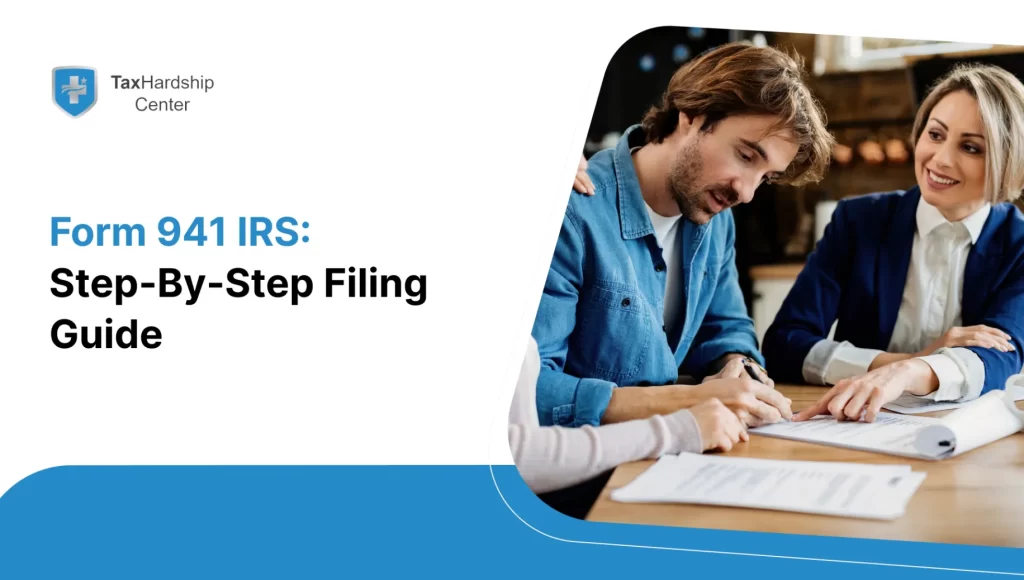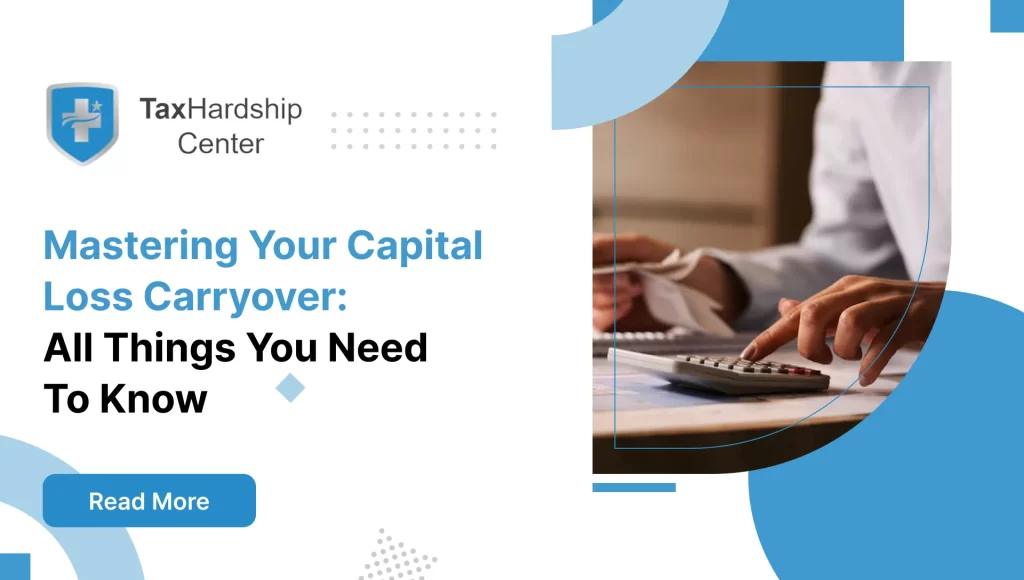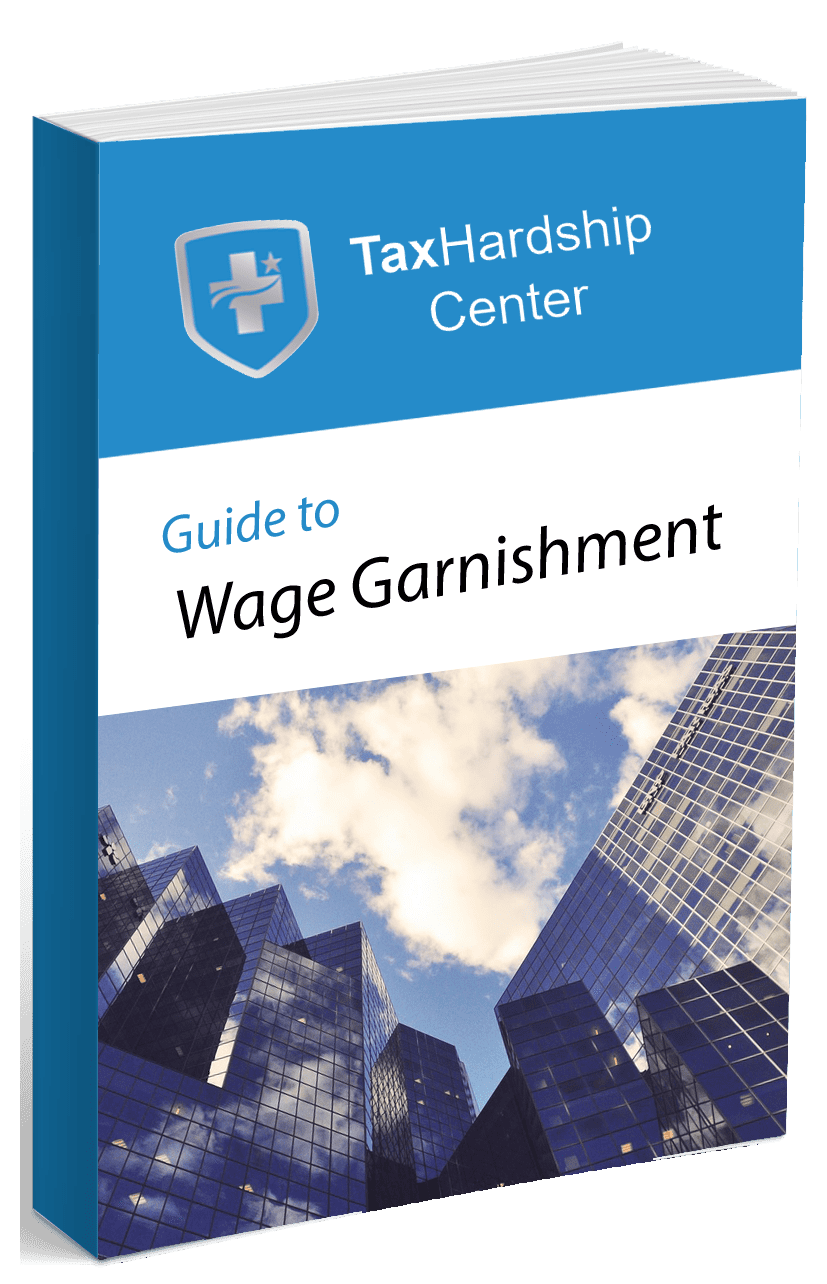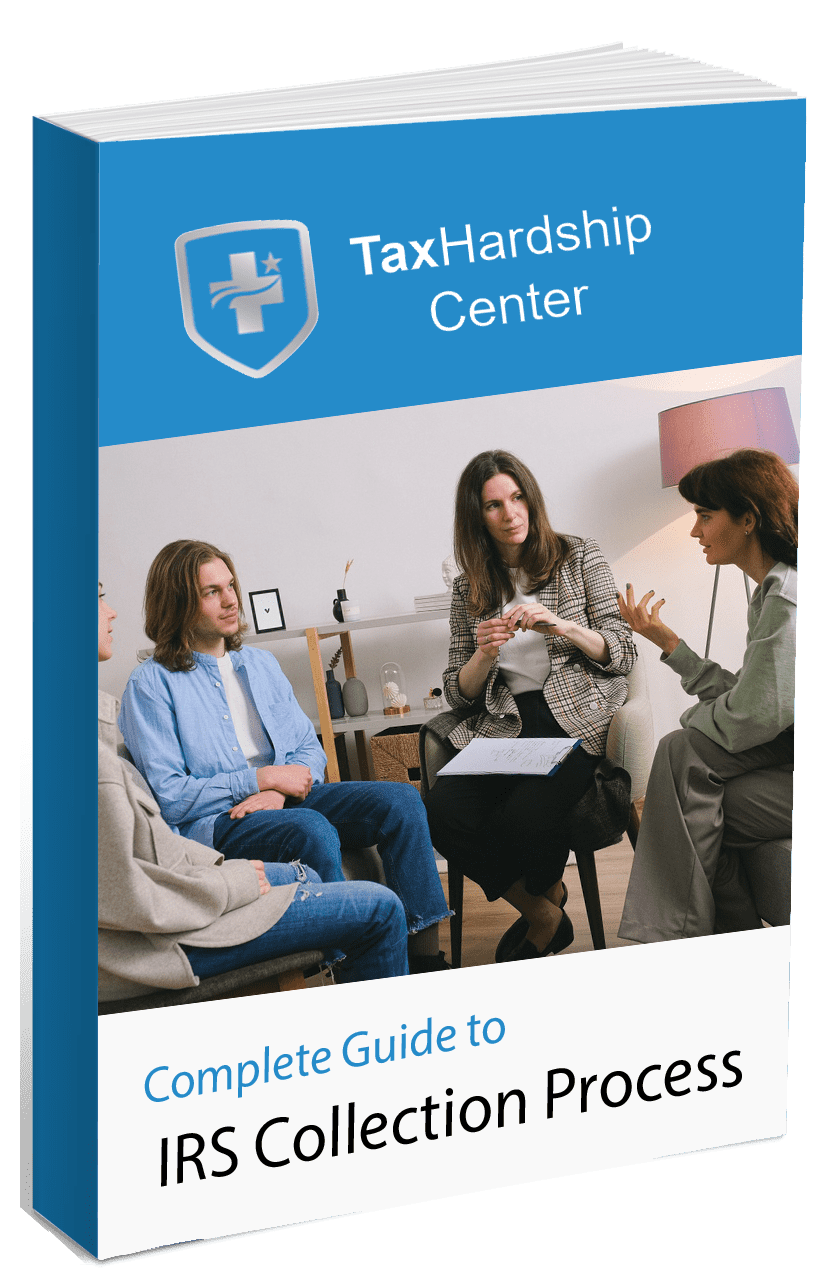Tax debt relief companies guide taxpayers through IRS programs such as Offer in Compromise and Installment Agreements, negotiating to reduce penalties and set up manageable payment plans. At Tax Hardship Center our Offer in Compromise service packages expert preparation of Form 656 with a hardship narrative that highlights your inability to pay full liability. Clients compare that to our Fresh Start Program which bundles penalty abatement and noncollectible status under one flat fee. Meanwhile US News notes Offers in Compromise resolve only about 15 percent of applications, underscoring the value of professional guidance US News Money.
Understanding Tax Debt Relief
Tax debt relief refers to official IRS channels that ease your burden of back taxes and related penalties. Options include installment agreements that stretch payments over time, penalty abatement to waive fines, currently noncollectible status when income falls below IRS thresholds and Offers in Compromise for qualifying hardship cases. Our penalty abatement guide explains how Form 843 can remove fees for reasonable causes like medical emergencies. Wikipedia’s overview of Offer in Compromise lays out the program’s strict eligibility and documentation requirements. Knowing when to pursue each remedy helps you avoid mounting interest and aggressive IRS collections.
What Is Tax Debt Relief?
Tax debt relief encompasses lawful methods to reduce or restructure your IRS liability. Installment agreements filed on Form 9465 break payments into manageable monthly installments. Penalty abatement uses Form 843 to remove late-filing or late-payment penalties when you demonstrate reasonable cause. Currently noncollectible status pauses collection efforts until circumstances improve. Offers in Compromise, processed via Form 656, let eligible taxpayers settle for less than full balance owed. Our Fresh Start Program combines all four approaches under one roof, handled by our CPAs and enrolled agents.
Common Types of Tax Relief Programs
The IRS lists four main relief options: installment agreements, penalty abatement, noncollectible status and Offers in Compromise. Installment plans require minimal upfront fees and can often be set up online. Penalty abatement may apply to first-time errors or unavoidable hardships such as job loss. Noncollectible status hinges on detailed income and expense disclosures but halts levies. Offers in Compromise demand rigorous financial analysis; our OIC submission process shows how we organize assets and income projections to meet IRS guidelines
When Should You Seek Tax Relief Help?
Professional help pays for itself once IRS notices arrive. A CP504 notice signals overdue balances. A Final Notice of Intent to Levy demands action within 30 days or garnishments begin. Our Installment Agreement service stops garnishments fast by filing paperwork immediately. Early intervention preserves options like penalty abatement and keeps liens from attaching to property titles.
Signs You Need Professional Tax Debt Help
Ignoring IRS warnings only worsens your standing. Wage garnishments, bank levies and tax liens all demand expert negotiation. A qualified firm can negotiate installment plans, secure penalty waivers and withdraw liens, preserving your credit and assets.
IRS Letters and Notices
You cannot ignore an IRS notice. CP504 and CP523 letters warn of escalating interest and collection actions. A Final Notice of Intent to Levy lets the IRS seize wages or bank funds. Professionals track deadlines and file timely appeals. Tax Hardship Center’s case managers review each letter, draft compliant responses and update you through our secure client portal.
Wage Garnishments and Liens
Garnishments divert up to 80 percent of your paycheck to the IRS until your debt clears. Tax liens attach to real estate titles, blocking sales or refinances. Relief experts file installment agreement requests or OIC applications that satisfy IRS examiners and halt garnishments. We also handle lien withdrawal requests once negotiated plans go into effect, restoring property rights.
Back Taxes and Penalties Accumulating
Unpaid taxes attract interest daily plus a 0.5 percent monthly penalty. That can double a balance within a year. Our penalty abatement expertise, detailed in our penalty abatement guide, shows how we argue reasonable cause under the Fresh Start rules to remove fines and focus on the principal.
Key Factors When Choosing a Tax Relief Company
Selecting a provider requires scrutiny beyond price tags. Credentials, transparency and track records reveal true quality. Demand a written engagement letter listing services, deadlines, fees and refund policies.
Licensing and Professional Credentials
Ensure your firm employs certified public accountants or enrolled agents. CPAs hold state licenses and meet continuing education requirements. Enrolled agents pass rigorous IRS exams under Circular 230. Both can represent you in any IRS matter. Avoid firms relying solely on unlicensed preparers—they cannot negotiate with the IRS on your behalf.
Industry Accreditations and Certifications
Look for membership in the American Society of Tax Problem Solvers or the National Association of Enrolled Agents. These bodies enforce ethical codes and provide dispute resolution channels for clients. Accreditation signals commitment to best practices and ongoing education.
Years of Experience Handling IRS Cases
IRS policies shift frequently, making experience crucial. Ask how many OICs, installment agreements and abatements they processed in the last 12 months. High-volume firms build rapport with IRS examiners and avoid common pitfalls that delay relief.
Specialization in Individual or Business Tax Relief
Personal income tax differs from payroll tax controversies. A firm might excel at Form 1040 back filings but lack depth in Trust Fund Recovery Penalty cases. Tax Hardship Center staffs separate teams for individual and corporate clients, ensuring specialized expertise for your situation.
Transparent Service Breakdown and Scope
Your contract should list every deliverable: case review, document gathering, form preparation, IRS representation and post-resolution monitoring. Vague promises hide potential upsells. Transparent scopes prevent billing surprises.
Questions to Ask Before You Hire
Never commit without answers to these critical questions. Their responses reveal process quality and client focus.
What Is Their Approach to Tax Resolution?
Do they handle your case entirely in-house or outsource parts to third parties? In-house teams with CPAs and attorneys ensure full accountability and consistent communication.
Do They Have In-House Tax Attorneys or CPAs?
Complex audit defense or Innocent Spouse Relief under IRC 6015 often requires legal counsel. Confirm whether licensed attorneys are on staff or retained through formal partnerships.
What Is Their Communication Policy?
Ask how often you’ll receive updates, whether by phone, email or secure portal. Written updates provide a clear timeline of filings, IRS responses and next steps.
What Are Their Fee Structures?
Compare flat-fee packages versus hourly billing. Flat fees give cost certainty; hourly rates can balloon if your case generates extensive correspondence. Request a detailed fee schedule showing which milestones trigger payments.
Comparing Fee Models and Costs
No-cost consultations let you gauge expertise before spending. Avoid firms demanding large upfront retainers without first reviewing your file.
Flat Fees vs Hourly Charges
Flat fees cover specified services for a set price. Hourly billing charges for each professional’s time. Tax Hardship Center’s flat-fee model covers your OIC or installment agreement package, all IRS forms, communication handling and post-resolution follow-up.
Beware of Large Upfront Payments
The Federal Trade Commission warns against debt relief companies that take full payment before performing any service. Reputable firms complete an initial assessment, outline your options and then collect fees as services get delivered.
Is a Free Consultation Offered?
A zero-cost case review shows confidence in your case merits and avoids pressure. If a firm refuses to inspect your tax notices before requesting payment, that is a red flag.
Red Flags to Avoid
Tax scams flourish among stressed taxpayers. Recognize these warning signs to protect yourself from fraud.
Unrealistic Promises and Pushy Tactics
Any firm promising to erase your entire tax balance or pressuring you to sign immediately deserves suspicion. No one can guarantee IRS approval of an OIC without full financial review.
Lack of Written Agreements
Never rely on verbal promises. If a firm resists documenting services, deadlines and fees in writing, walk away. Written engagement letters protect you against unexpected costs and missed deadlines.
Generic Advice Without Case Review
Beware of companies that peddle broad guarantees like “we resolve every tax debt” without discussing your specific IRS notices, tax years owed and financial details. Quality relief plans start with personalized analysis.
Researching and Verifying a Company
Due diligence avoids surprises later. Check reviews, licensing and complaint histories before you pay.
Online Reviews and Ratings
Scan Trustpilot and Google Reviews for verified client feedback. Look for consistent themes rather than isolated praise. Positive patterns in responsiveness and outcomes matter more than raw star ratings.
Client Testimonials
Ask for anonymized references. Speaking with past clients yields real-world insights into turnaround times, communication and satisfaction.
BBB and State Licensing Boards
Check the Better Business Bureau for complaints and ratings. Verify CPAs’ licenses through your state board of accountancy and enrolled agents via the IRS directory.
Public Complaints and Legal Actions
Search federal court records and your state attorney general’s site for lawsuits or disciplinary actions. A clean regulatory record is a strong indicator of reliability.
How Top Tax Relief Firms Handle IRS Negotiations
Experienced firms follow structured processes to minimize delays and reduce IRS follow-up requests.
Offer in Compromise Submissions
OIC packages include Form 656, Form 433-A or 433-B for financial disclosures, plus hardship narratives. Our OIC walkthrough outlines how we prepare asset valuations and income projections to meet IRS standards.
Installment Agreements
Installment agreements filed on Form 9465 let you spread payments over up to seven years. We handle all paperwork, set up direct debit options and monitor compliance to prevent default. For more on setting up payments yourself, see US News on installment plans US News Money.
Penalty Abatement Appeals
Penalty relief under the Fresh Start program uses Form 843 or intake center requests. Our penalty abatement strategies blog shows how we document reasonable cause such as medical emergencies or natural disasters.
Innocent Spouse Relief Cases
For joint filers facing unexpected liability from a spouse’s errors, Innocent Spouse Relief (Form 8857) can remove shared debt. We compile affidavits, prepare narratives of reasonable cause and handle appeals as needed.
Audit Representation
If the IRS audits your return, in-house attorneys and CPAs represent you at every stage. That expert advocacy often keeps additional assessments and penalties to a minimum.
DIY vs Hiring a Relief Company
Simple cases sometimes work on your own. Complex debts demand professional insight and IRS liaison.
When DIY Works
If you owe less than $5,000, face no liens or garnishments and meet IRS thresholds for Online Payment Agreements, you can file Form 9465 yourself at IRS.gov.
When You Absolutely Need a Pro
Back taxes spanning multiple years, payroll tax levies or high penalties often require expert negotiation. Professionals navigate IRS rules, avoid procedural missteps and free you from collection pressure.
Timeline for Tax Resolution
Understanding the steps helps set realistic expectations.
Consultation to Investigation
After your initial call, gather IRS notices, tax returns and financial statements within the first week. We draft representation forms and relief applications immediately.
IRS Communication and Proposal Submission
IRS examiners typically take six to nine months to review Offers in Compromise. During that period, we respond promptly to any follow-up questions, file additional documentation and push for examiner decisions.
Resolution and Monitoring
Once the IRS approves your relief—whether an installment plan, penalty waiver or OIC—we monitor compliance and confirm official case closure, keeping you updated monthly.
Choosing Local vs National Tax Firms
Location influences service style, meeting options and sometimes cost.
Pros of Local Representation
Local firms offer in-person meetings, personal rapport and familiarity with regional IRS offices. They understand state tax nuances and may leverage local connections for faster outcomes.
Benefits of National Expertise
National providers like Tax Hardship Center use scale to lower fees, maintain specialized teams for each IRS program and deliver consistent service across all states.
What to Expect After Signing Up
A clear onboarding process lays the foundation for success.
Onboarding and Documentation
You receive an engagement packet detailing services, deadlines and a secure portal link. Upload documents once and let your dedicated case manager handle the rest.
Dedicated Case Managers
You’re assigned a single point of contact who tracks IRS deadlines, fields your questions and ensures timely submissions. That continuity prevents gaps that could trigger penalties.
Regular Progress Updates
Expect monthly written reports outlining IRS communications, examiner requests and next steps. You’ll never wonder where your case stands.
Final Checklist for Choosing a Tax Relief Partner
Before you sign, verify these essentials: credentials confirmed, written fee schedule, detailed plan of action and refund policy if deadlines slip.
Preparing for Your First Consultation
Gather all IRS notices, recent tax returns, bank statements and a list of monthly living expenses. Prepare at least five questions about process, fees and expected timelines. Well-organized documents speed case review.
Staying Compliant After Resolution
Clearing back taxes is only half the battle. Use calendar reminders, tax software or payroll withholding to file and pay on time each year. If your finances change, consider an ongoing retainer for proactive advice.
Common Tax Relief Myths
Debunk these persistent misconceptions.
Myth: The IRS will settle for pennies on the dollar. Reality: Offers in Compromise succeed only for genuine hardship cases that meet strict IRS criteria
Myth: All relief firms are the same. Reality: Credentials, negotiation strategies and success rates vary widely.
Myth: Anyone can get penalty abatement. Reality: You must prove reasonable cause with solid evidence as outlined in our penalty abatement guide.
Conclusion
Choosing the right tax debt relief company requires verifying credentials, comparing transparent fee structures and understanding IRS programs. Whether you aim for installment agreements, penalty abatement or an Offer in Compromise, this guide equips you to vet providers effectively. Start with a free consultation, gather your financial documents and partner with experts who negotiate on your behalf and keep you informed every step of the way.
FAQs
Q1: How much do tax debt relief companies typically charge?
Flat fees range from $1,000 to $5,000 depending on case complexity. Installment plan setups usually cost less than Offer in Compromise packages.
Q2: How long does an Offer in Compromise application take?
IRS examiners generally decide within six to nine months, though complex cases can extend beyond a year.
Q3: Can I file penalty abatement myself?
Yes, by submitting Form 843 at IRS.gov, but professional help ensures complete documentation and higher approval odds.
Q4: Are tax relief providers regulated?
CPAs adhere to state accountancy boards. Enrolled agents follow IRS Circular 230 standards. Always verify licensing online before signing.
Q5: What happens if my relief application is denied?
You can appeal an OIC rejection using Form 13711 or negotiate a new installment plan. A qualified firm guides you through alternative IRS options.







